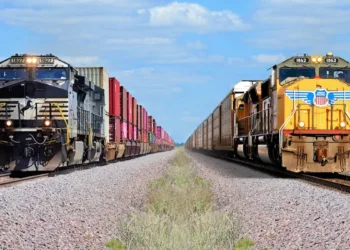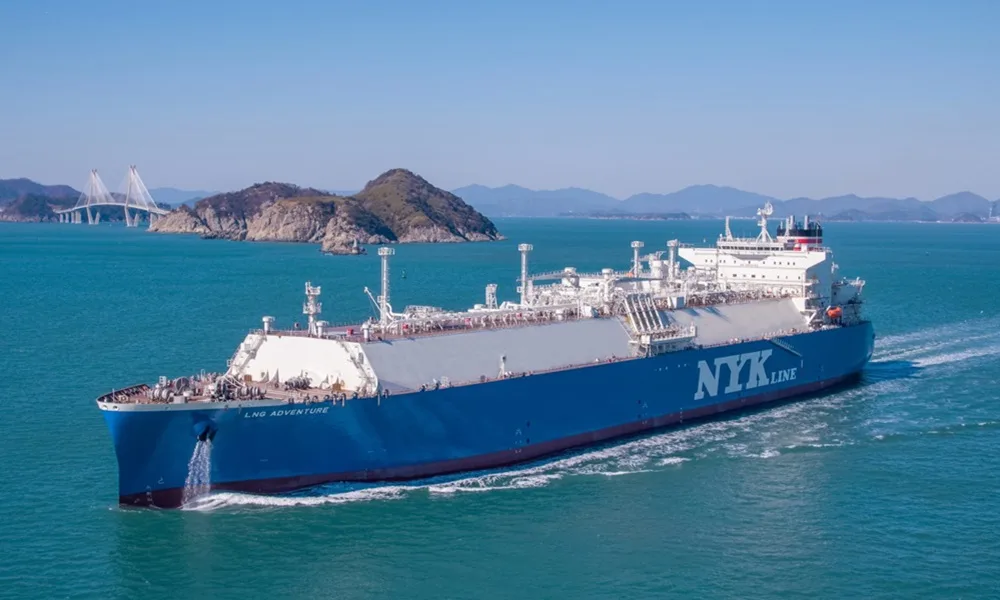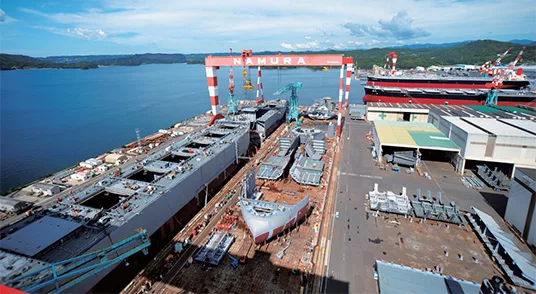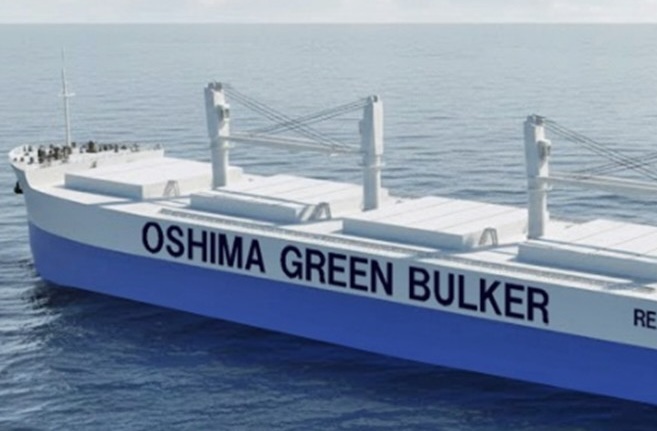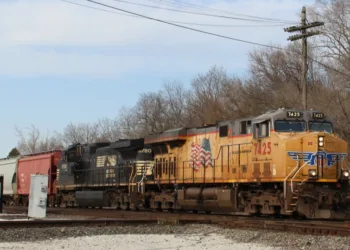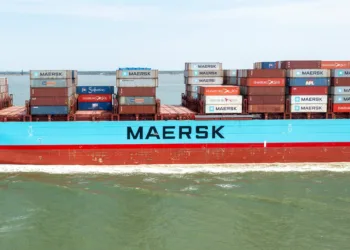Borderlands Mexico is a weekly rundown of developments in the world of United States-Mexico cross-border trucking and trade. This week: New customs regulation could slow cross-border trade; Daye opens $300M manufacturing plant in Nuevo León; and US eases truck tariff burden for Mexico under new trade structure
New customs regulation could slow cross-border trade
Mexico’s customs system is about to undergo a major procedural change — a shift that could reverberate through factories, carriers, and warehouses on both sides of the border.
Starting Dec. 9, importers will be required to electronically submit a Manifestación de Valor Electrónica (MVE) — known in English as the Electronic Declaration of Value — through the Mexico’s Ventanilla Única de Comercio Exterior Mexicano (VUCEM) portal before their goods can clear customs into the country.
The new digital requirement transforms what was once a back-office record-keeping duty into a front-end compliance checkpoint.
Importers must now file a sworn statement detailing how the customs value of each shipment was calculated and attach supporting evidence such as commercial invoices, freight and insurance charges, supplier contracts, and proof of payment.
“Before, importers could assemble this paperwork after the shipment had already been cleared,” said Adolfo Campero, CEO of Unimex Group’s customs and warehousing division and a licensed customs broker in both the U.S. and Mexico, told FreightWaves. “Now nothing can cross the border until the sworn declaration is transmitted to the Mexican government.
Why Mexico is tightening the rules
According to Campero, the government’s push stems from high-profile fraud cases tied to fuel imports, where under-valued shipments cost Mexico billions in unpaid taxes.
“There’s been a lot of media coverage about fraud in petroleum imports,” he said. “So, instead of focusing only on those offenders, the government decided to impose very strict requirements on everyone. They’ve increased penalties for any kind of error — even inadvertent ones.”
The reforms, he said, may strengthen oversight but risk penalizing legitimate importers caught in the digital paperwork dragnet. “It’s going to make operations slower, at least at the beginning,” he said. “It will also make customs services more expensive because brokers need more manpower and technology to handle the new process.”
A new digital bottleneck
Campero said the shift, though meant to increase transparency, adds a new layer of digital bureaucracy that many companies are unprepared to handle.
“It’s a little bit of an onerous process,” he explained. “You have to go onto a government website, fill out electronic forms with drop-down fields, and upload multiple supporting documents. It’s not something you can rush through five minutes before a truck arrives at the bridge.”
Accessing VUCEM requires each importer’s electronic tax signature, or e.firma — a credential that unlocks all tax and customs data held by Mexico’s authorities. Because of cybersecurity concerns, companies rarely share that signature with outside parties.
“Many importers are reluctant to let their customs brokers use the e.firma,” Campero said. “They treat it like their corporate bank password — very few people even inside the company have it. So, if they don’t give it to the broker, the importer has to do the filing themselves.”
That’s creating anxiety across import/export departments already overloaded with paperwork. “These teams tell us they don’t have the time or expertise to calculate customs values and fill government forms,” he said. “That’s why they rely on brokers in the first place.”
Delays, penalties — and rising costs
Because the MVE must be filed before customs clearance, even small administrative hiccups can hold up entire shipments. Missing documents — such as a freight invoice or contract between a U.S. parent and its Mexican subsidiary — can block the filing, leaving loads stranded at the border or accruing storage fees at ports and airports.
“We anticipate delays in clearing customs for many shipments,” Campero said. “That means trucks waiting on the U.S. side of the border or containers sitting at maritime terminals because one document is still pending.”
The new rule also carries steep fines for mistakes. Under Mexico’s updated customs code, errors in the MVE automatically translate into errors in the pedimento, the formal import entry, exposing companies to combined penalties that can exceed 70,000 pesos (about $3,800) per shipment.
“Even minor administrative errors could become very costly,” Campero said. “If there’s a mistake in the valuation on the MVE, that same mistake carries over to the pedimento, so you’re penalized twice.”
To avoid that risk, Unimex has begun training clients on how to use the VUCEM platform, calculate customs values correctly, and maintain digital records for audits. “We’re offering workshops to help companies get familiar with the process, because it’s not intuitive,” he said. “You have to know where to find every number — freight, insurance, assists — and have documentation ready to upload.”
Preparing for impact
Campero said Unimex is already helping multinational clients map their supply chains to identify where costs originate — from factory gates in Asia to inland freight carriers delivering to Mexican ports.
“Some clients are asking us to literally chart who provides every piece of information used to calculate customs value,” he said. “They want contact names, emails, and documents for each supplier and intermediary. It’s forcing companies to really understand their supply chains in a way they hadn’t before.”
He advises manufacturers to build buffer inventory and reconsider just-in-time logistics strategies to avoid production stoppages once the new rule takes effect.
“Every day we deal with shipments that are urgent, where a delay could shut down a production line,” Campero said. “This is one more obstacle we’ll have to manage. Companies that keep zero safety stock are going to feel it the most.”
Daye opens $300M manufacturing plant in Nuevo León
Chinese manufacturer Ningbo Daye Garden Machinery Co. has opened a new $300 million production facility in Salinas Victoria, Nuevo León, underscoring the state’s growing appeal as a hub for advanced manufacturing and foreign investment.
The plant, which will produce electric tools and smart gardening and irrigation products, is expected to create more than 2,000 direct jobs and strengthen local and regional supply chains. Company officials said the investment highlights Nuevo León’s skilled workforce and competitive industrial environment.
“Opening this plant consolidates Nuevo León’s position as a national leader in attracting foreign investment,” a company representative said.
Yuyao, China-based Ningbo Daye Garden Machinery manufactures tools and garden machinery.
US eases truck tariff burden for Mexico under new trade structure
The Trump administration has finalized a new tariff framework for imported medium- and heavy-duty trucks (MHDVs) that will impose a 25% duty on non-U.S. content while easing costs for vehicles assembled in North America.
The measure, signed by President Donald Trump on Oct. 17 and effective Nov. 1, 2025, allows trucks and parts meeting USMCA origin requirements to be taxed only on the foreign portion of their value — offering significant relief to Mexico, the top U.S. truck exporter.
The proclamation maintains a 25% duty on MHDV imports from countries outside North America. It also extends a 3.75% manufacturing credit through 2030 for U.S.-built light, medium and heavy-duty vehicles — a measure aimed at offsetting higher parts costs and incentivizing domestic assembly.
The post Borderlands Mexico: New customs regulation could slow cross-border trade appeared first on FreightWaves.



